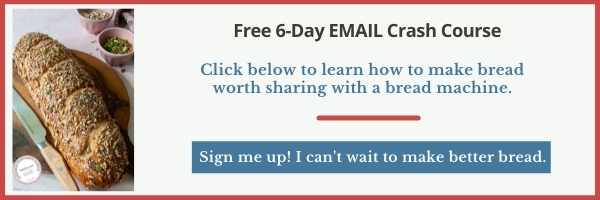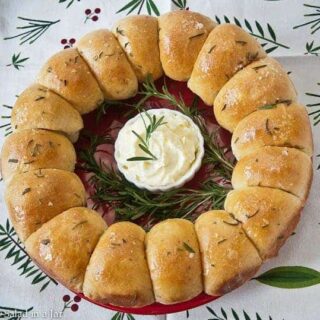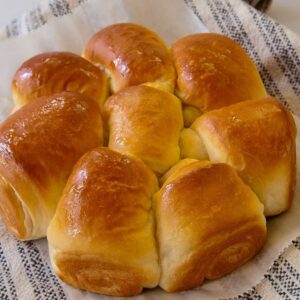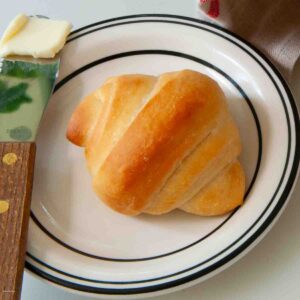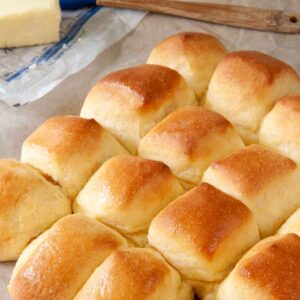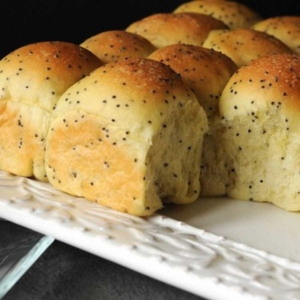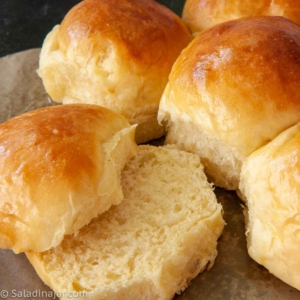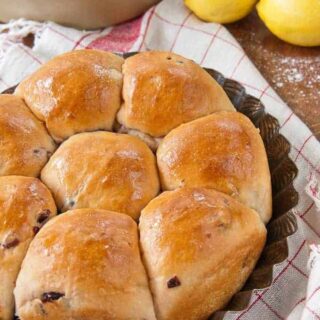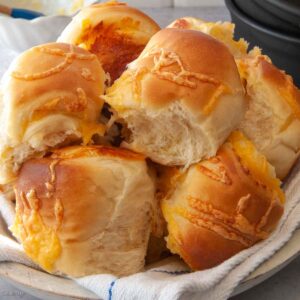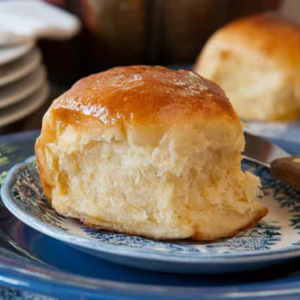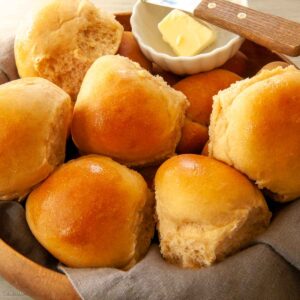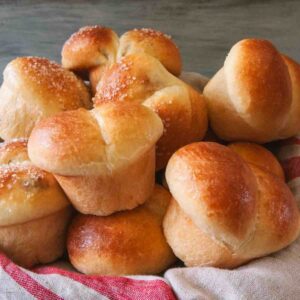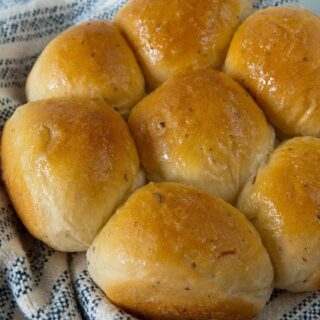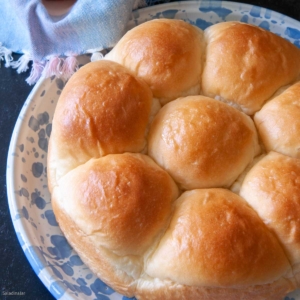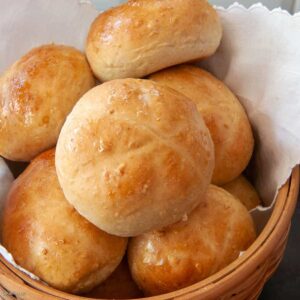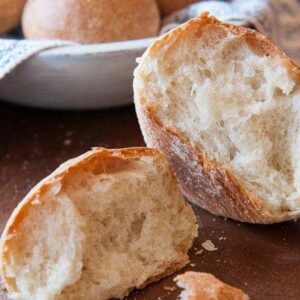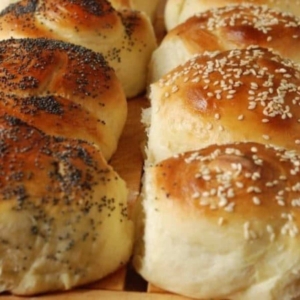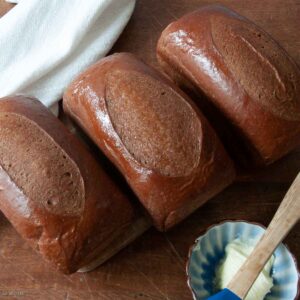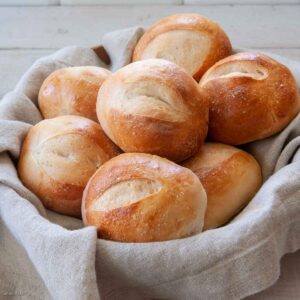17 Dinner Roll Recipes (Mixed in a Bread Machine)
Sneak Preview: If you want to make savory dinner rolls as part of a celebratory meal, I have 17 ideas–and growing. Here is a collection of mostly easy recipes for your consideration. Mix the dough in your bread machine for the best rolls possible.
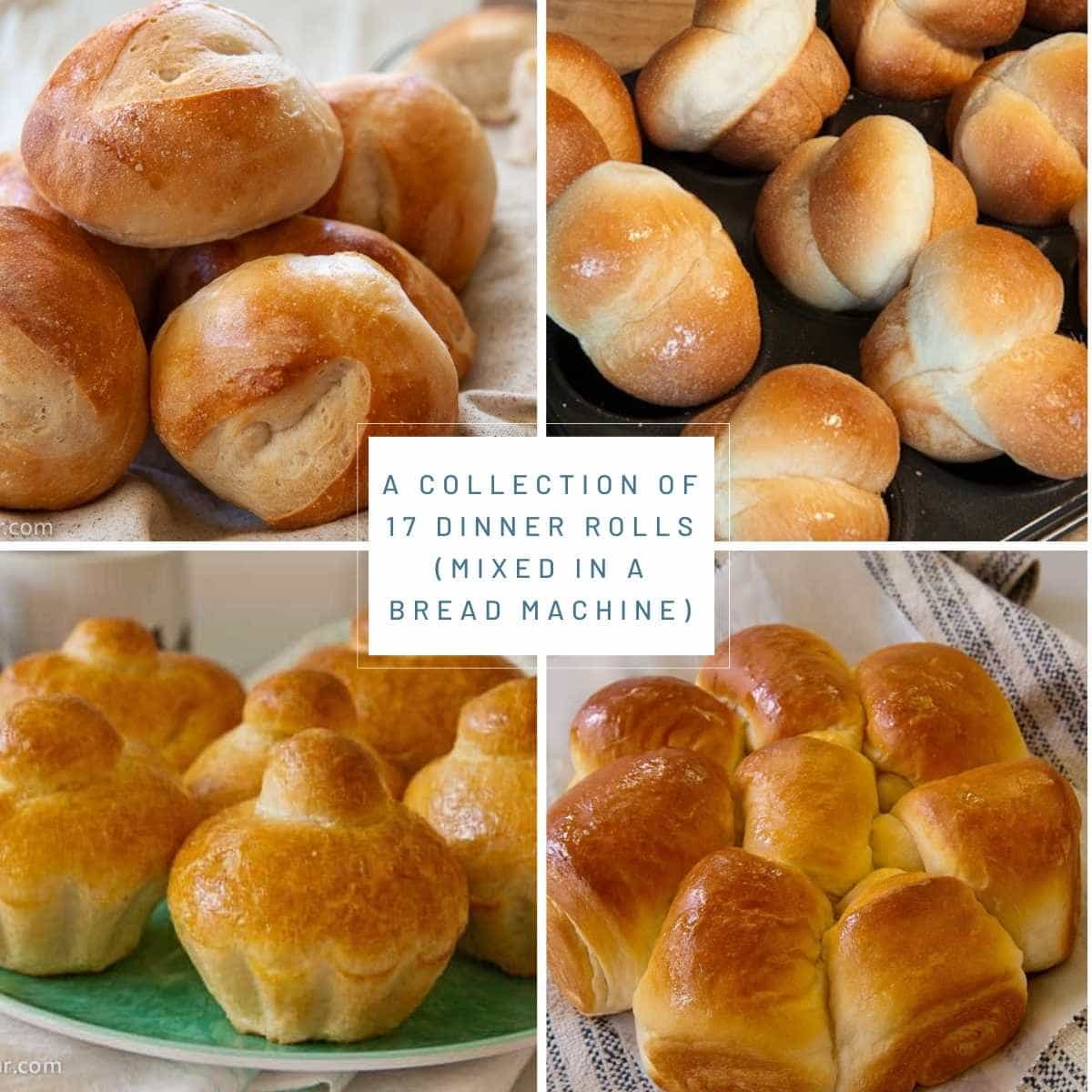
As an Amazon Associate, I earn from qualifying purchases.
If you are planning a dinner menu, what will you do about the bread? Are you looking for a spectacular yeast roll? Something that will make the house smell warm and inviting? I’ve gathered up most of my dinner roll recipes for your convenience.
Watch the video or search the collection at your own pace below.
All my bread recipes are designed to mix the dough in a bread machine using the DOUGH cycle. Remove the dough from your machine and shape it. Let it rise one more time before baking it in your conventional oven.
Using your bread machine to mix and knead produces beautifully kneaded bread, especially when you follow my tips for making the best dough possible. Shaping it by hand organizes the texture and lets the baker get creative. Baking in a conventional oven means the crust of your rolls will be perfectly golden brown (depending on your oven and pans) with a delicate or crispy crust.
No problem if you don’t have a bread machine. Use a stand mixer or mix and knead the dough by hand if you prefer. See the notes in each recipe for directions.
What Ingredients Will I Need?
Most of my recipes include a list of ingredients and possible substitutions. Here is a general list.
FLOUR: Some of these recipes call for all-purpose flour, while others require bread flour. Rolls made with all-purpose flour are usually lighter, fluffier, and tender. If you want your rolls to be more substantial and slightly chewy, look for recipes that specify bread flour.
LIQUID: You’ll find recipes calling for milk, water, large eggs, and a combination. Milk makes bread slightly sweeter and causes the rolls to brown nicely. The higher the fat content, the better the rolls. Eggs make rolls richer. In most recipes, warm milk or water is not necessary. The liquids can be added either cool or at room temperature. The kneading action of the bread machine will heat the ingredients quickly.
BUTTER or OIL: Melted butter could fit into the liquid category, but I prefer to use firm butter that has been finely chopped. The friction caused by the paddles of the bread machine will melt the butter at the perfect time. This makes it less tempting to add too much flour.
SALT: I use table salt or sea salt in all my bread recipes. If you want to use Kosher salt, add ¼ teaspoon extra. Although you can experiment with reducing the sodium, please do not cut it out completely. The yeast needs salt to behave correctly, and your bread needs salt to taste good.
SUGAR: Unless otherwise noted, use granulated sugar. If you want to substitute honey, remember that it’s a liquid, so you may need to add extra flour to compensate. Observe the dough as it kneads to assess the situation, and add additional flour if it’s too sticky to handle. If you want to cut back on sugar, here are some things to consider.
RELATED POST: 6 Bread Machine Secrets You Need To Know
What Equipment Will I Need?
- A bread machine or bread maker, a stand mixer, or a strong hand (See directions for using a stand mixer or making by hand in the notes of any recipe.)
- Digital kitchen scales for weighing the flour and liquid
- Lightly floured surface for shaping the rolls, such as a clean countertop, a large cutting board, or a silicone baking sheet (my favorite)
- A clean kitchen towel or plastic wrap covered with cooking spray
- A small pastry brush for applying glazes or brushing butter on rolls
- Two eight or 9-inch round or square metal baking pans, a 9 x 13-inch baking pan or baking sheets
- A wire rack for cooling the rolls
Browse for Your Favorite Savory Dinner Roll Recipe
FAQ about making bread machine dinner rolls for the holidays:
You can make nearly all bread dough the night before and bake it the next day. After the initial rise or at the end of the DOUGH cycle, remove the dough from the pan and shape it into rolls. Cover and store in the refrigerator. The next day, allow the rolls to warm and proof until puffy. Bake as directed in the recipe.
You can do both. Please note that homemade dinner rolls do not keep in the freezer, as well as commercially frozen rolls. They use additional dough conditioners and preservatives. Try not to make them more than a week ahead of time for the best results.
If you want to freeze rolls before baking, let them finish the DOUGH cycle so that the dough rises at least once or twice (depending on your machine.) Then, push the dough down and shape the rolls. Please do not allow them to rise again. Cover loosely and place on a baking tray. Cover and freeze. When frozen hard, remove the rolls and put them into a plastic bag. Double bag to prevent freezer burn. When ready to bake, place the frozen rolls in a pan or on a cookie sheet. Allow extra time for the rolls to thaw and rise until puffy. Bake as directed.
If you want to bake the rolls before freezing, bake them at a temperature 25˚F lower than specified until the rolls barely start to brown. Remove rolls from the oven and allow them to cool on a rack. Double wrap and freeze. Before serving, let the rolls defrost. Bake at the specified temperature until the bread turns golden brown and the internal temperature is 190˚F (88˚C).
Many of these recipes make an excellent loaf of bread. However, I haven’t tried it with most of them, so experimentation is in order. If you also want to bake the recipe in your bread maker, you may have to adjust your standards a bit, as bread baked in a bread machine often has a thick cardboard-like crust and doesn’t always brown evenly. If you’re lucky with the timing, the bread won’t be too dense, but it may not be something you want to share at a festive family gathering.
Take a look at this recipe for Savory Monkey bread. First, cut the dough into portions with a pizza cutter. Then, dip the pieces into butter and arrange them randomly in a bundt pan. My family loves this recipe just as much as any dinner roll recipe I have.
Parting Thoughts: I hope you find you find your favorite dinner rolls here. If not, write to me at the address given below. I’ll be happy to help.
If you have questions or suggestions, email me privately for a quick answer: Paula at saladinajar.com. Hope to see you again soon!

